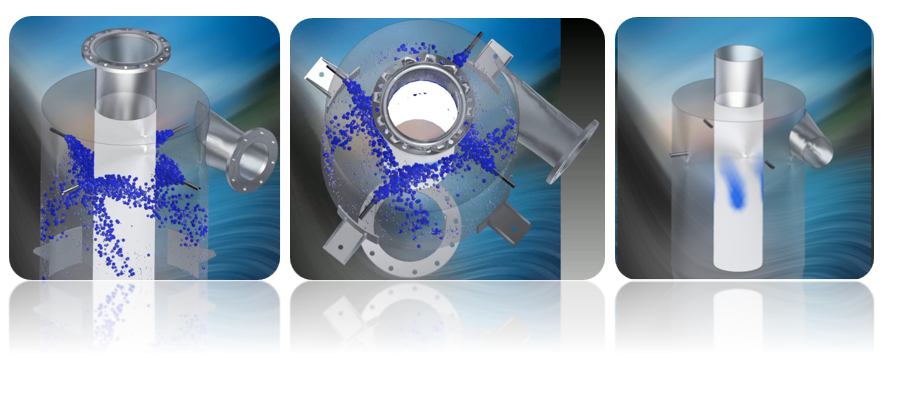
Using cyclone separators is a time tested, efficient and low-cost way to remove particles from a gas flow. Typical particle removal efficiencies can be well over 95% for particle sizes above 10 microns but efficiency falls rapidly for smaller particles. Ways to improve collection efficiency are operating cyclone separators in series or mounting e.g. bag filters downstream of the cyclone. Another way to improve the separation performance is to spray water from the side or the top of the cyclone near the inlet, effectively increasing the particle weight and thus separation efficiency.
In the pursuit of enhancing spray cyclone performance, the spray nozzle type, nozzle locations as well as nozzle flow rate are parameters that should be optimized. Traditionally a lot of such optimization work has been done experimentally but owing to faster turn-around times and decreased cost, simulations are increasingly being used. In a recent study we carried out detailed simulations demonstrating the potential of Computational Fluid Dynamics (CFD) to perform spray cyclone design optimizations.
[KGVID loop=”true” autoplay=”true”]https://stressfield.fi/wp-content/uploads/2020/02/Cyclone_Spray_Drying.mp4[/KGVID]
Uutiskirjeessä avaamme laskentamaailman saloja helposti ymmärrettävässä muodossa. Tavoitteemme on tuottaa hyödyllisiä tietoiskuja sekä lujuus- että virtauslaskennasta. Uutiskirje julkaistaan noin 2–3 kk välein ja se ovat mahdollista perua milloin tahansa.